Posted Sept. 30, 2007
|
DRBLHF has discontinued its lease of
Liston Range Rear Light |
| At its Board meeting in September, the Directors of the
Foundation voted unanimously to discontinue the organization's lease of
the 101-year-old Liston Range Rear Light Tower.
"It was a difficult and sad decision," Foundation President
Judith Roales said later. "But it was the responsible thing to
do. We have neither the volunteer power nor the financial resources
to care for a light so far from our base of operations in Sussex
County."
The action will have no impact on the DRBLHF's other lighthouse
activities and responsibilities, all of which will continue...and continue
to grow.
Board Members and other friends of the Liston tower -- including
Director Harry Spencer Jr., who was born at Liston Rear while his father
was keeper there -- made a final official trip to the light
recently. In addition to removing Foundation belongings and making
sure the property was as it had been when they took over two years ago,
the visitors climbed to the top of the 126-foot tower for a last look at
the awesome second order Fresnel range lens and the unusual Fresnel
reflector that sits behind the light source. |
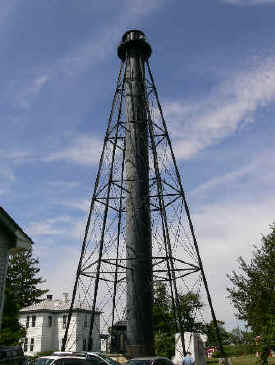 |
| Photos from the visit are shown below. To
view photos from another visit to the Liston Range Front Lighthouse,
click here. The front lighthouse was recently sold to a new private
owner by Foundation friend Dr. Bill Duncan. |
By Barb Moulinier
|
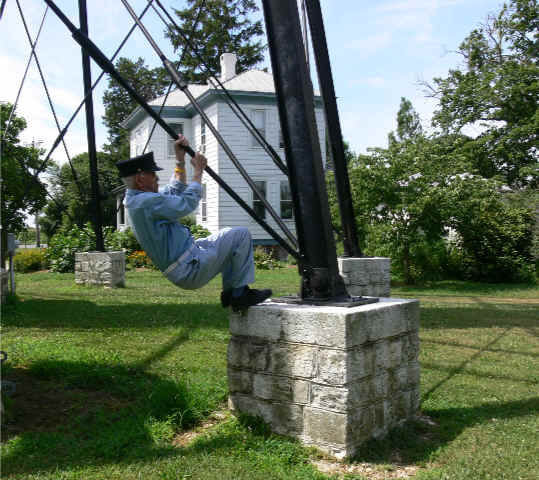 |
Harry Spencer revisits some of the tricks of his childhood, using the
angle iron braces of the tower as a jungle jim. |
|
Barb Moulinier |
|
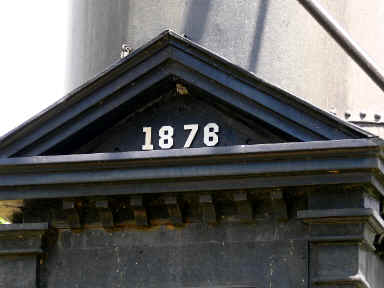 |
Outside, the 1878 numerals above the iron door mark the
date the light tower first went into service on the Port Penn
Range. The tower was moved to Liston Range in 1906.
Inside, iron stairs ascend to the watch room in a tight spiral of
red. |
 |
|
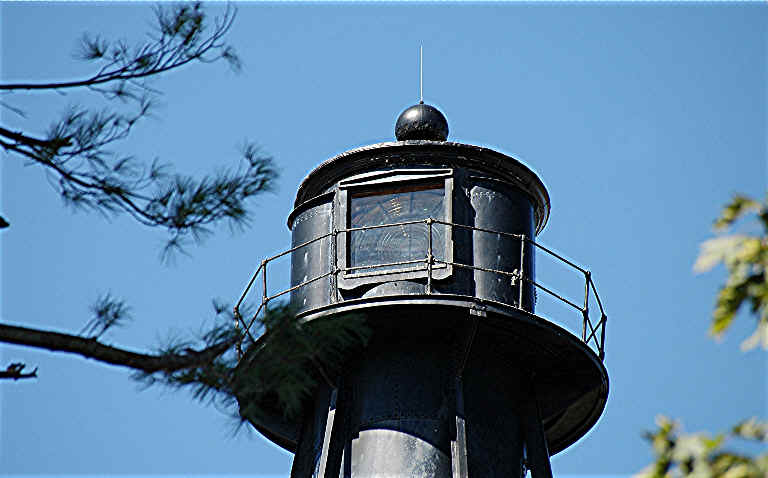
|
|
Judith
Roales
|
| The massive lens, nearly six feet in diameter, completely
fills the window through which it sends a powerful beam down a 20 mile
range. |
 |
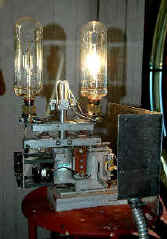
The huge lens and a reflector, their prisms set in brass
that is dulled with age, surround an automatic bulb changer that holds two
1,000 watt bulbs. The light burns 24 hours a day. When the sun
strikes the prisms of the lens colorful rainbows paint the
tongue-in-groove walls. |
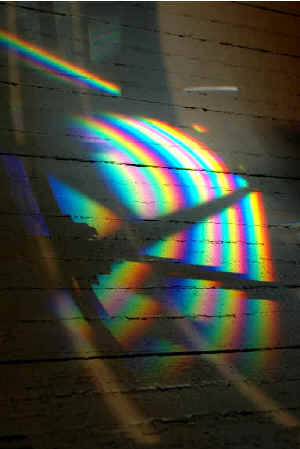 |
|
 |
The view from the narrow walkway around the lantern room gives a
unique perspective on the tower itself and on the buildings that were
once part of the lighthouse reservation. The house on the left
is the assistant keeper's house. The one on the right is the
keeper's house. Behind it is an oil house. |
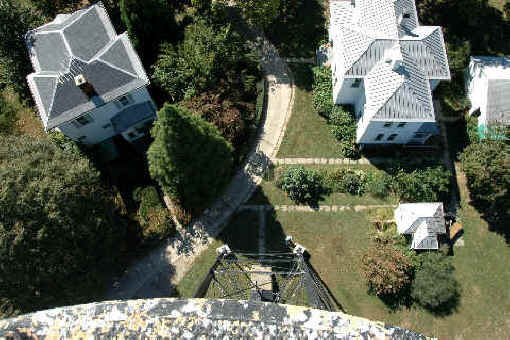 |
|
|

Since the rear light tower sits three miles from the Delaware
River, it is surrounded by a quiet agrarian scene. The corn has
been harvested now and the empty fields are brown with chaff.
|
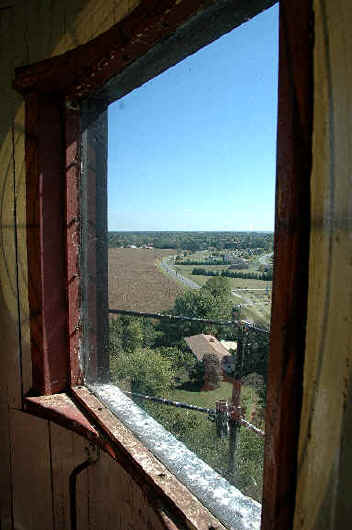 |
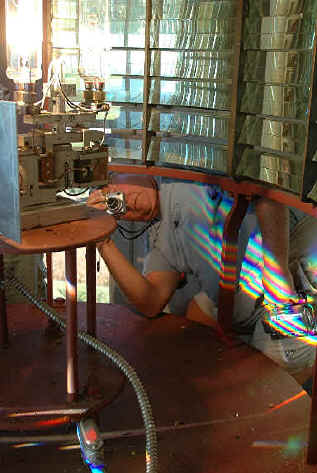 |
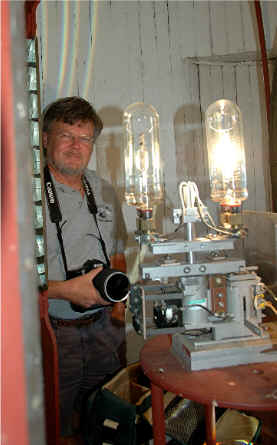 |
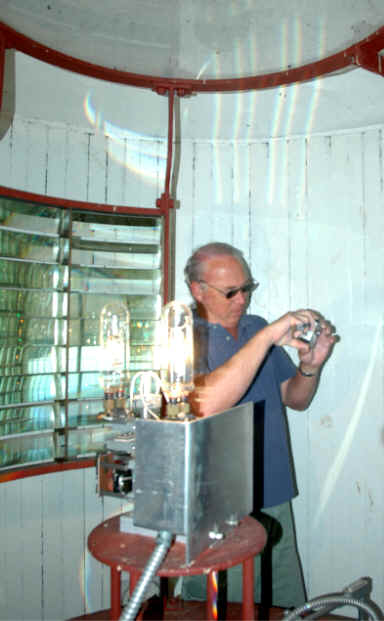 |
| |
|
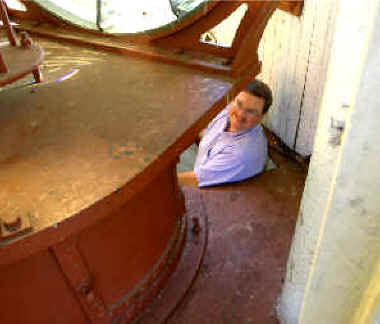 |
Board Members at the top of the tower included (above, L
to R) Red Moulinier, Herb von Goerres, and John Gordon. Also (L)
Dave Lowe and (R) Judith Roales. Harry Spencer, with more climbs
to his lifetime credit than any of the others, stayed below this time. |
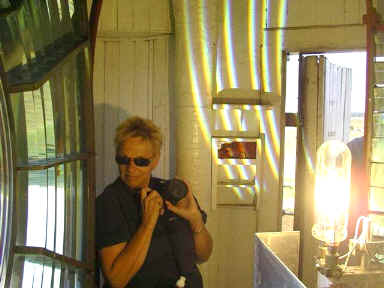 |
2595This web site is maintained by Delaware Quilts
|
